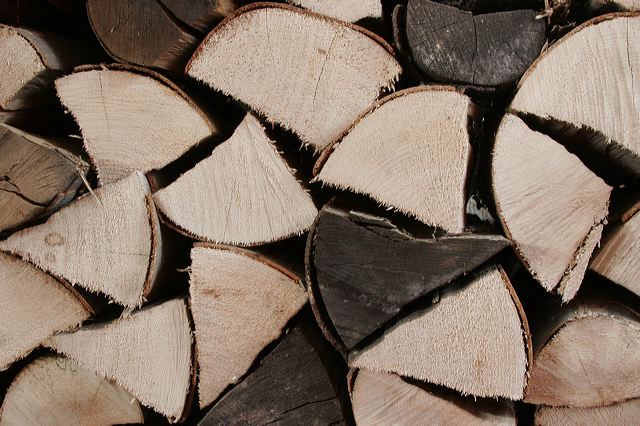Log wood
Definition and Properties
Log wood generally refers to wood logs, that have been split and cut to lengths for direct use in wood stoves or boilers. It is produced directly from agricultural or forestry companies. In Europe, hardwood has a higher relevance for combustion than softwood. The most common wood species for log wood in Europe are: beech, maple, oak, ash and birch. But there are also some softwood species which are used for combustion, like spruce, fir and larch.
The usual lengths for log wood are 0.25m, 0.33m and 0.50m. It is common to buy log wood in cubic meter of stacked wood. Thereby the amount of wood is 70%, the other 30% is air.
For a high combustion performance, the moisture content should amount 15-20% at maximum. Typically, fresh harvested wood will have a moisture content of approximately 50%. For reaching the suitable moisture content an adequate storage is required. The time for drying varies between a half and two years, in respect to species and storage place. A perfect place for storage is outdoor, on a windy and sunny place, but covered from rain.

Standards
There is the European Standard, DIN EN ISO 17225-5:2014-09: Solid biofuels – Fuel specifications and classes – Part 5: Graded firewood, which includes terms and definitions of log wood.
The European Standard DIN EN 16510-1:2013-02: Residential solid fuel burning appliances – Part 1: General requirements and test methods, defines among other things the classification of roomheating appliances and boilers, their emission limits and their minimal efficiency requirements.
Application in log wood stoves/boilers
A log wood stove is a roomheater, fired with log wood, with a completely enclosed combustion chamber and with a fire door, which is normally closed. The heat is transmitted by radiation and/or convection. If the room heater is equipped with a boiler, hot water can be provided.
The most common types of roomheating appliances in Europe are: firewood roomheater, tiled stoves and residential biomass cooker. Also central heating with a log wood boiler is common.
For a high performance with low emissions, complete combustion (oxidation) should be achieved. Thus, attention must be paid to the following three parameters of biomass combustion:
- Time: Because of the high proportion of volatile components in the biomass, and the separate reaction of gases and solids, sufficient residence time in the combustion chamber is required.
- Temperature: Sufficiently high temperatures in the combustion chamber are crucial.
- Turbulence: In order to ensure the complete oxidation of the combustible gases, oxygen and fuel gas must be well mixed.
